As we mark 22 years since the Sept. 11 attacks in the U.S., we want to pay tribute to the incredible four-legged heroes who tirelessly helped in the days that followed.
Immediately after the 9/11 attacks, thousands of rescue workers across the U.S. and the world rushed to ground zero to assist, including over 300 highly trained dogs skilled in search and rescue, police work and comfort therapy.
These puppers endured 12-hour days for several weeks, and many suffered injuries like cuts, scrapes, heat exhaustion and burns during their search efforts.
Despite their relentless efforts, only 20 survivors were found amid the debris, with the last one being discovered 27 hours after the collapse by Trackr, a retired Canadian police dog.
Not finding many survivors took a toll on these furry heroes, so to boost their spirits, many handlers organized "mock find" rescues for the dogs.
"When they train, they don’t search for hours without finding anybody," Dr. Cynthia Otto, director of the Penn Vet Working Dog Center, who cared for the dogs at ground zero, told The New York Times. "You need to remind the dogs every so often that they do get to win."
While we'd love to showcase all the hundreds of dogs that played a vital role during our country's darkest times, here's a look at a few bright pups that lifted our spirits through it all.
Trackr
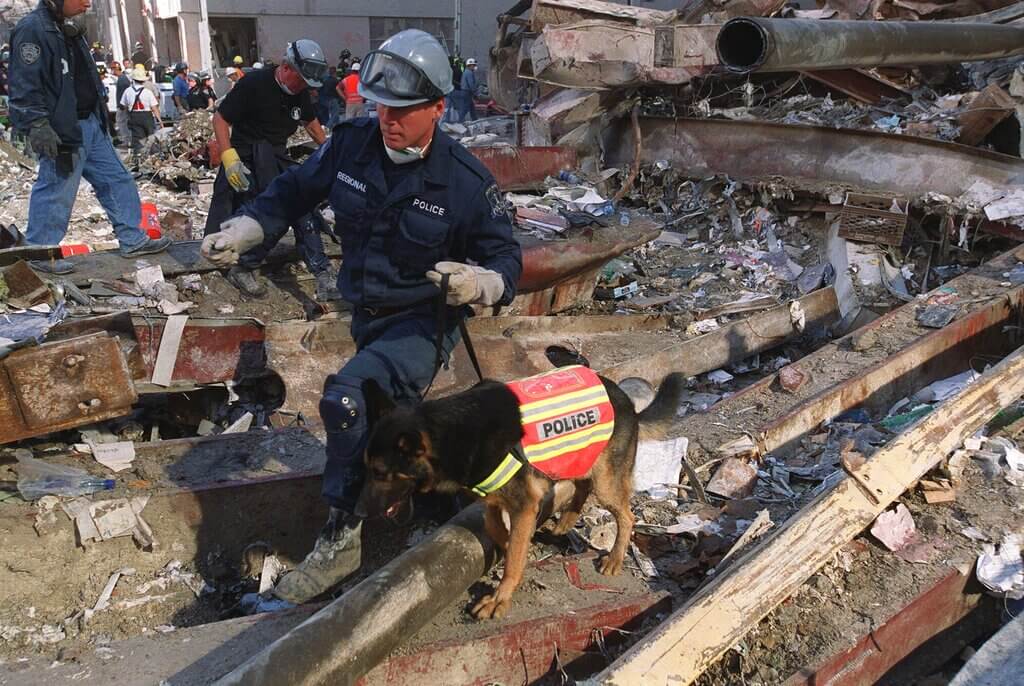
Trakr, a German Shepherd originally from Halifax, Nova Scotia, is probably the most popular of the bunch, as he is responsible for finding the last survivor beneath the rubble.
The furry hero tirelessly scoured the debris for a grueling two days, only to collapse from smoke inhalation, overwhelming exhaustion, and painful burns. After he was treated for his injuries, he returned home to fully retire as a police dog.
In recognition of their heroic efforts, Trakr and his handler, James Symington, were presented with the "Extraordinary Service to Humanity" award by Dr. Jane Goodall in 2005.
Trakr's DNA was submitted to a cloning contest by Symington before his death in April 2009, resulting in the birth of five cloned "Trakrs" later that year.
Riley
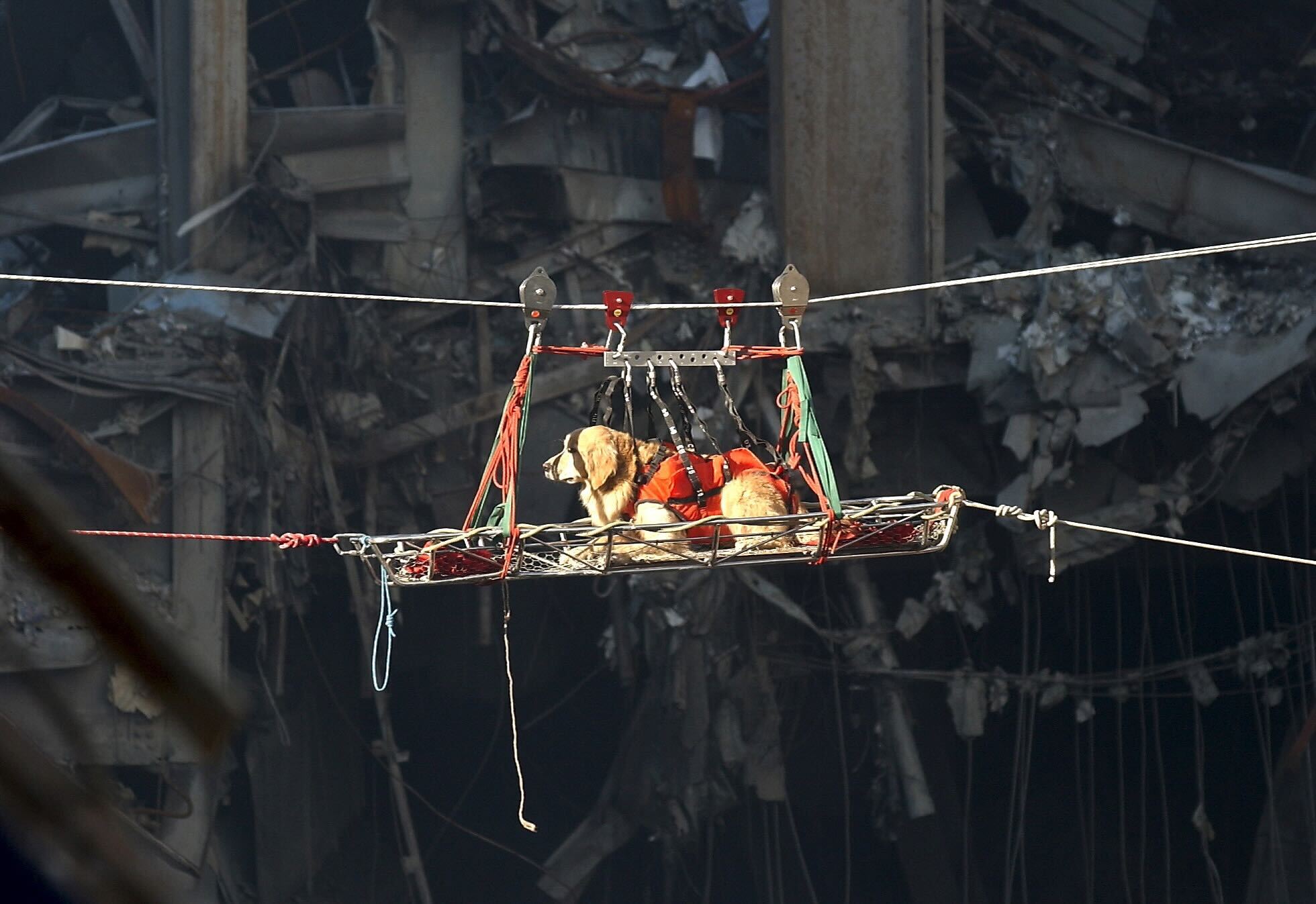
Riley, a 4-year-old golden retriever, was featured in one of the most famous photos from 9/11.
The photo shows Riley being carried across debris at the World Trade Center. He was trained to find living people and was not trained to be a cadaver dog. After encountering only lifeless bodies, he became depressed and was reassigned as a comfort dog, which helped alleviate stress from firefighters and police working through the rubble.
Riley passed away at the age of 13 in 2010 due to cancer believed to have been caused by his 9/11 rescue missions.
This pupper "helped inspire a study of the long-term effects this type of rigorous search and rescue work can have on canine health," according to the American Kennel Club.
Apollo

Apollo was the first canine responder at the 9/11 scene, arriving at the South Tower just 15 minutes after its collapse.
At just 2 years of age, this German Shepherd graduated from the New York Police Department’s Special Operations Division and became one of the city’s top dogs in the 1990s, working with the first K-9 Urban Search and Rescue team.
Apollo tirelessly searched for survivors, dedicating 18 hours a day for weeks before he had to be forced to stop from exhaustion.
His heroic efforts earned him theDickin Medal, an award that originated in the U.K. after World War II to honor military service dogs. In 2002, he was also honored by the Westminster Kennel Club Dog Show.
This four-legged hero died in November 2006 from health problems at the estimated age of 14.
Bretagne
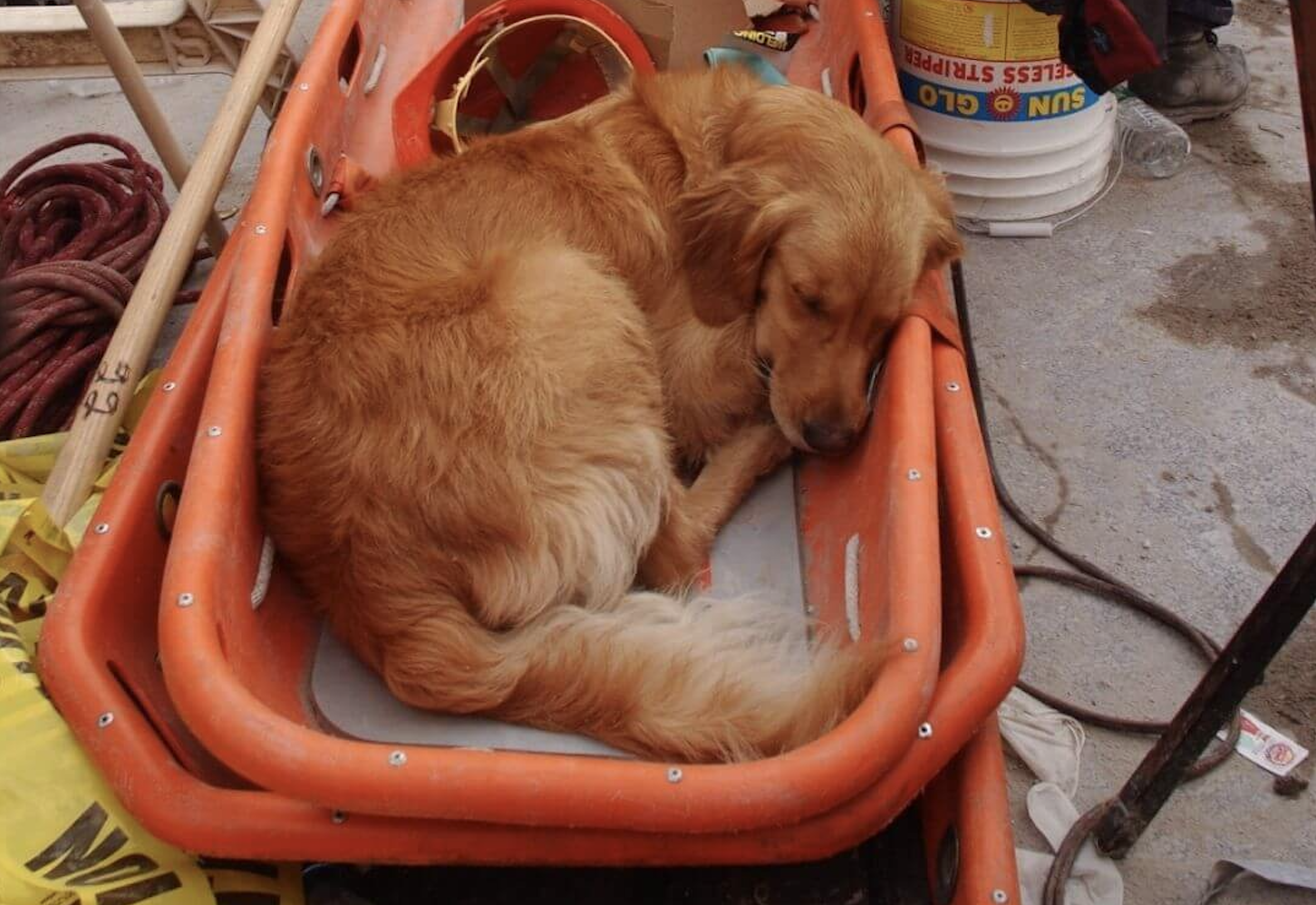
Bretagne (pronounced Brittany), believed to be the last surviving 9/11 ground zero search dog, died at age 16 in 2016.
This golden retriever was a member of the Federal Emergency Management Agency and one of the few dogs that could navigate the rubble without a leash.
She worked 12 hours a day for two weeks straight, squeezed into tight spaces, ventured into dark crevices, and uncovered numerous victims who had died.
Sept. 11 "was her first mission, but she worked it like a pro. She didn’t get cut up, fall down, or get hurt," said her handler, Denise Corliss. "A lot of times, firefighters would come by and pet her, talk to her and tell her stories."
After her 9/11 mission, Bretagne helped FEMA during Hurricanes Katrina, Rita and Ivan before retiring in 2009 and becoming a fire department rescue dog in Texas. She retired fully in 2011 and became a reading helper for first-graders.
Sage
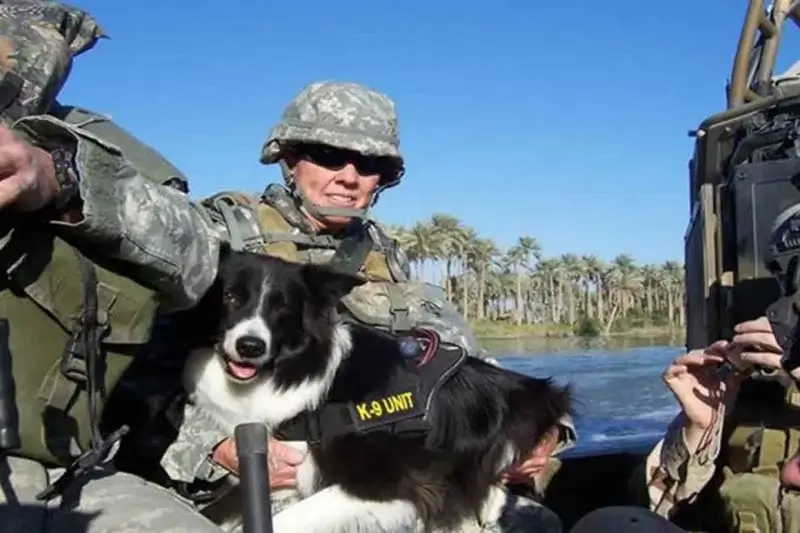
At just 18 months of age, Sage became part of FEMA's search and rescue team.
This black and white Border Collie embarked on her first major mission at the age of 2, responding to the 9/11 attacks.
Sage's handler, Diane Whetsel, led her as she combed through the debris at the Pentagon, relying on her keen sense of smell to find the remains of the terrorist who piloted American Flight 77 into the building.
Sage earned recognition as one of the nation's top 50 search and rescue dogs, achieving the highest level of acclaim from FEMA.
After her 9/11 mission, she traveled to seven countries and worked on high-profile missions. She looked for survivors in the aftermath of hurricanes Katrina and Rita, and also went to the Caribbean island of Aruba in the quest to find the remains of missing U.S. teen Natalee Holloway.
Sage then worked as a cadaver dog in Iraq from 2007 to 2008, and in 2009she went on to receive the ACE Award for Canine Excellence in Search and Rescue and was named the American Humane Association's "Hero Dog" in 2011.
Sage passed away in Aug. 2012.
Jake
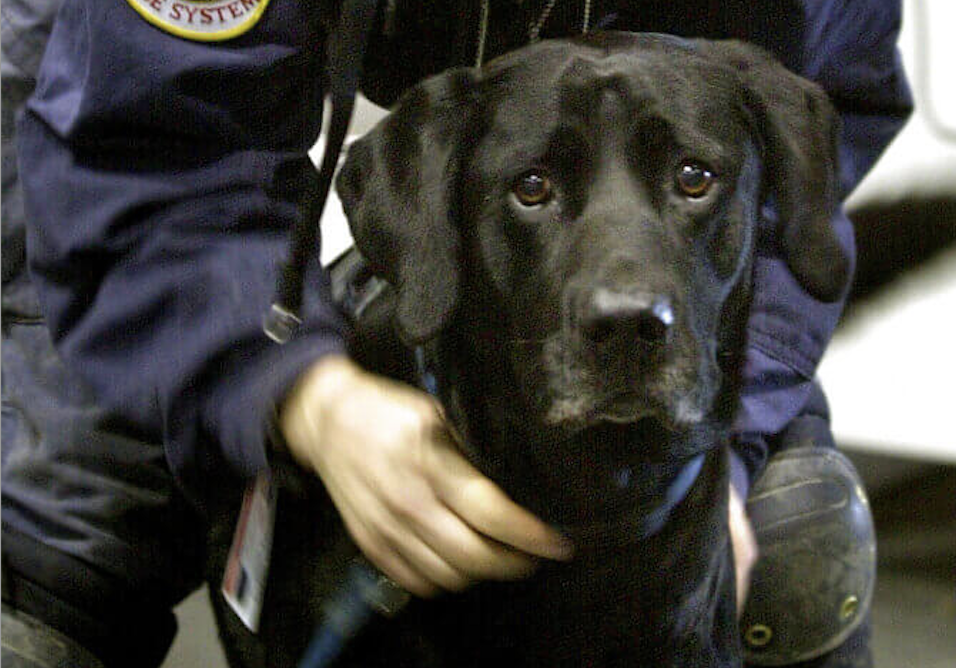
Jake, a stray American Labrador retriever with a broken leg and injured hip, was rescued by Mary Flood, a dog handler with the Utah Task Force 1 at just 10 months old.
Against all odds, Jake emerged as a celebrated hero for his role in the 9/11 search and rescue.
He spent 17 days searching for survivors and victims' remains. While he didn't find a survivor, he enjoyed a well-deserved free steak dinner at a restaurant as a token of appreciation for his efforts.
Following his 9/11 mission, Jake became one of under 200 U.S. government-certified rescue dogs, on call 24/7 for disasters like building collapses, earthquakes, hurricanes and avalanches.
He helped in the search and rescue after Hurricane Katrina and Hurricane Rita and then trained other dogs across the U.S.
“He was a great morale booster wherever he went,” Flood said. “He was always ready to work, eager to play — and a master at helping himself to any unattended food items.”
Jake later became a therapy dog for children before passing away in 2007 at the age of 12 from cancer.
Thunder
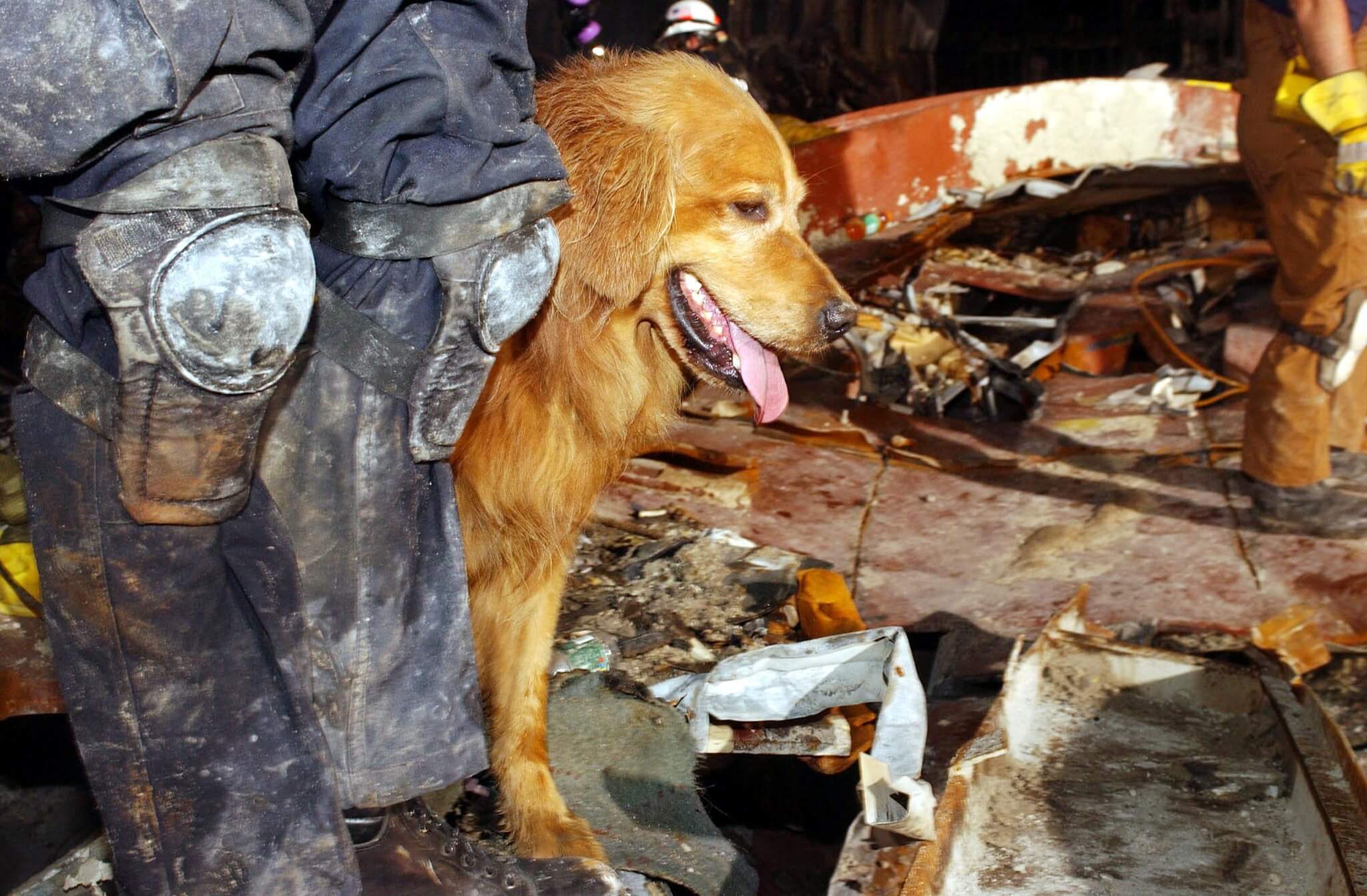
Thunder and his handler, Kent Olson, flew from Washington to aid in the search and rescue mission.
Despite the grim circumstances, this golden retriever never wore anything but a cheerful smile in every photograph, offering a ray of hope during those dark days.
Although details about Thunder's post-9/11 endeavors are minimal, he had prior experience in search and rescue, primarily focusing on avalanches and potential drownings. However, the 9/11 mission marked his most extensive assignment.
Thunder embodies the boundless love and joy dogs bring to our daily existence.
These loyal companions, working side by side with humans, played a crucial role in saving lives and aiding in the rescue efforts following the tragic terrorist attacks — a heartwarming reminder of their incredible contribution.
Trending stories at Scrippsnews.com


